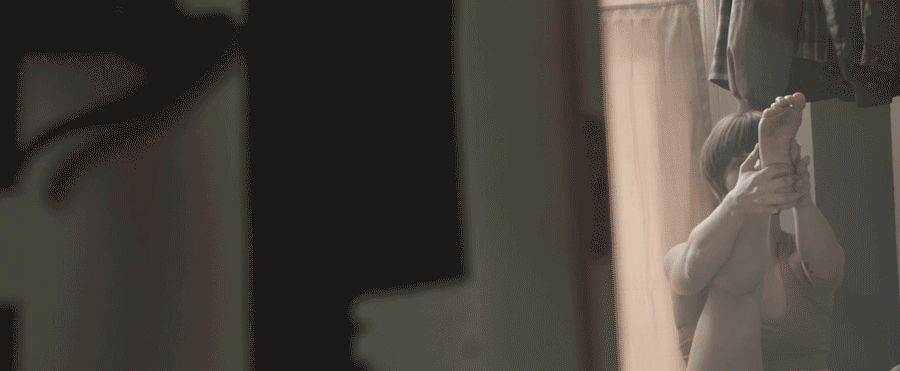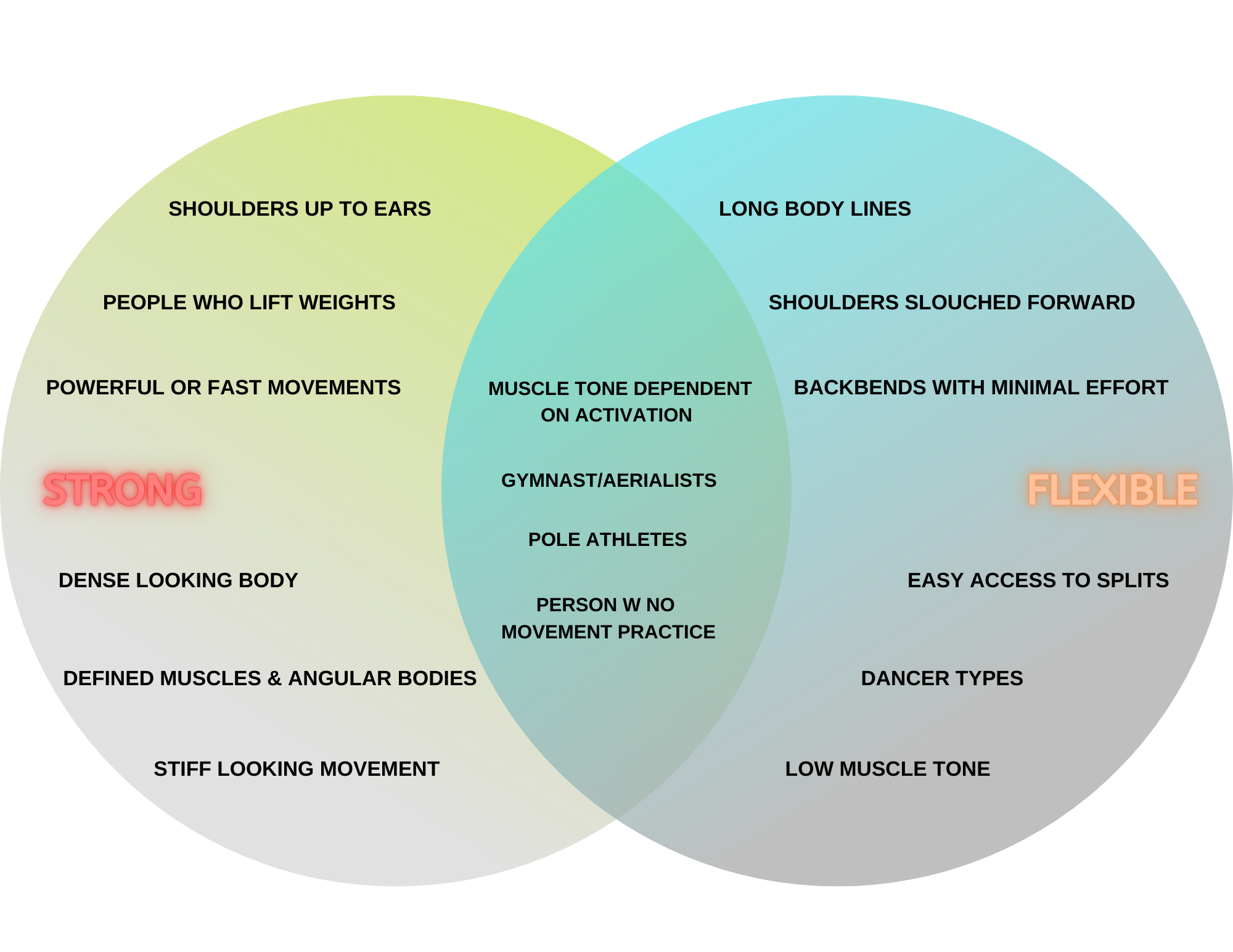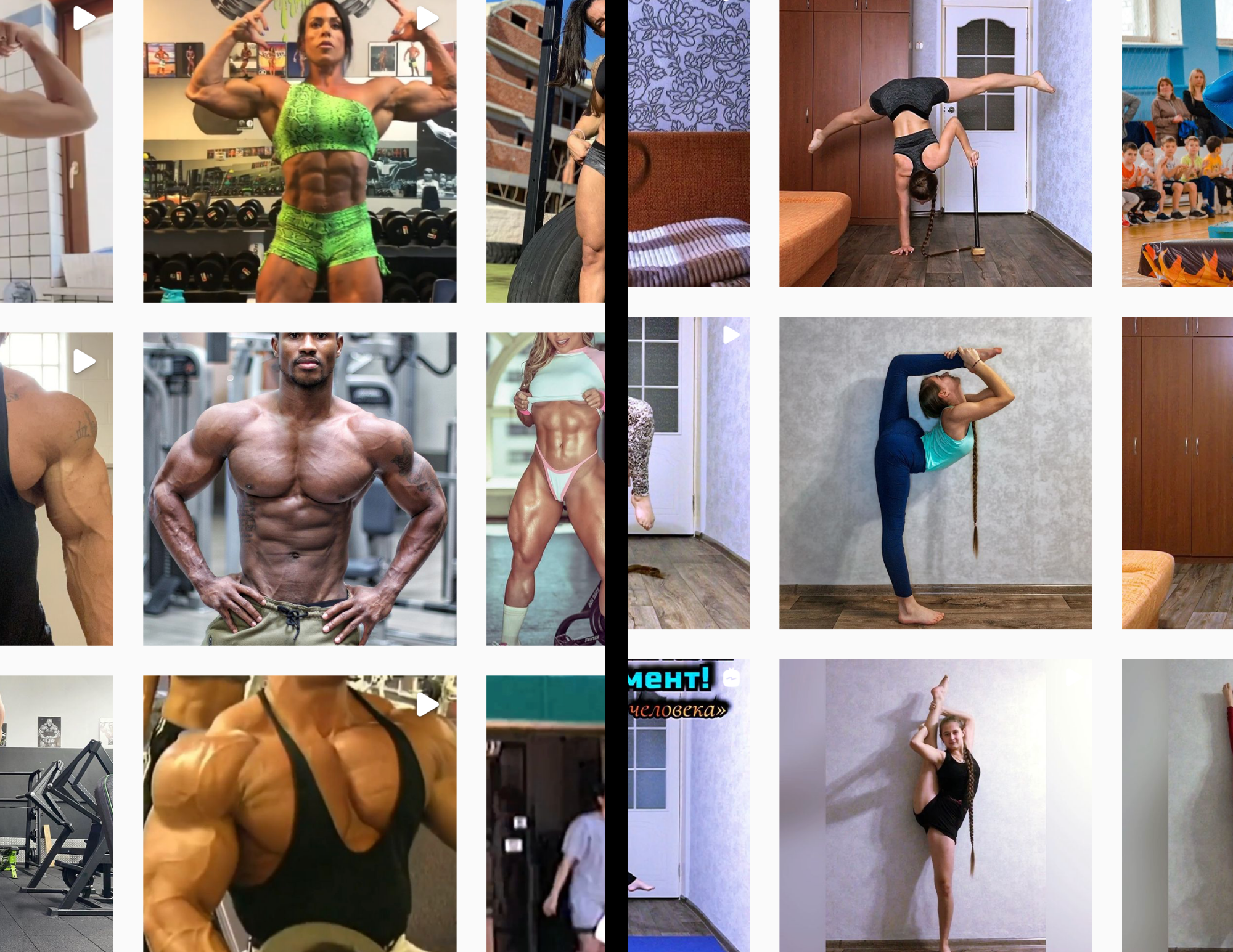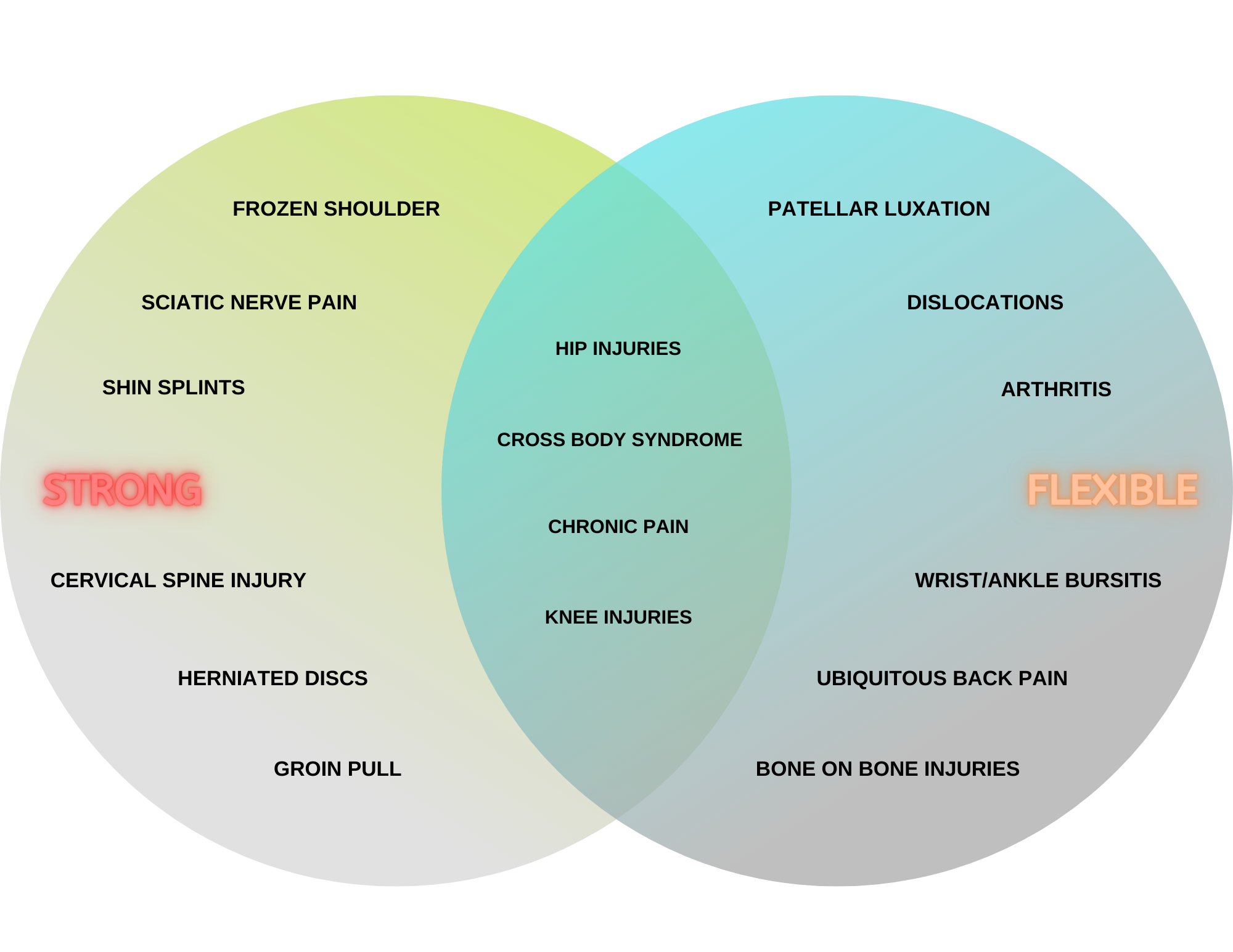INTRO
Ok. Part 2 is about tools to get you moving with better awareness and integration. At the end of the day, a lack of integration is the cause of most of the issues we face in our movement. This is true whether you’re a little or a lot stiff, a little bendy or hyper-mobile. From here forward you need to embrace the fact that there is no template you can follow to get your body to move more comfortably, safer, athletically, etc. You are responsible for creating a path for yourself. As a reminder, I’m not a doctor so this post is to be taken as anecdotal. Consult a physician before undertaking the suggested drills and skills below. For more of the “why” behind this series go read Stability Spectrum Pt. 1.
So now let’s dive into some principles I’ve come up with:
Scale Your Core Work
Biggest Joints First
Create Support
Isolation and Isometrics
There are probably others. If you’re a movement specialist you may have some to add as it relates to foundational movement/Range of Motion (ROM) training. If so, drop them in the comments. But let’s dive into each of those because they will come into play heavily once we get moving.
1. SCALE YOUR CORE WORK
All of your movement needs to start with the organization and appropriate activation of your core. In yoga, we take that a step further to suggest that movement starts with breath and intention but really, same-same. Your lungs are in your torso, are connected to your core muscles, et voila!
Everyone has to do core work - serious and casual movers alike. Why? If you are on the stable/stiff side of the equation and you don’t train your core, you are going to over-train your extremities. This disorganization is not good for the body, yet the body adapts and the muscles and tissue of the extremities get stronger to compensate. As you learned if you attended or read Pt. 1 - the amount of tissue you have surrounding your joints effects your ROM. You will build the muscle, lose ROM and keep going in the general direction of disorganization until injury happens. If you are on the flexibly/hyper-mobile side of things, a lack of core activation leads to chronic spinal extension/anterior pelvic tilt. Alternately or additionally, your core does not start and end in your abs. Your core starts in your feet, travels up your inner thighs and connects into the torso via your pelvic floor. Improper or lack of core activation leads to the weight of your body and organs constantly pressing down on your lower body from the Lumbar Spine downwards. This can result in compressed discs, lower body joint pain and Pelvic Organ Prolapse.
As a movement teacher, I see people doing core incorrectly all the time.
*If your core work hurts you you’re doing more harm than good!
*If you don’t feel your targeted core work in your core you’re not working it!
Core work is infinitely scalable. It encompasses breath work, weighted deficit sit ups and everything in between. We will get into examples further down and in real life. But, suffice it to say, as it relates to the asterisks, there is no excuse. You have to do core work so you might as well do it right (effectively and safely). Here are some targets to hit every time you do core work and how you will know you’re doing it right:
You have to be able to breathe normally
You have to go SLOW. Your surface abs are twitch muscles. They work when you go fast. Your deep core is NOT twitch fiber. It ONLY works when you go slowly.
If you are targeting your core muscles and you don’t feel it in your abs and obliques, you’re not really working them.
2. BIGGEST JOINTS FIRST
When it comes down to it, our bodies are comprised of simple machines. Go deep enough down that rabbit hole with enough maths and physics and you will discover that the joint that loads first is the joint that carries the greatest load. Now in yoga, there’s a whole lot more room to get that wrong because you aren’t carrying more than your body weight. But it still makes me cringe when someone does chair and their knees jut forward before their butt goes back. If you’re stepping under a 200lbs rack for a back squat do you want your hips to carry most of that 220lbs or your knees? Your hips!! You can read more about Joint Loading Order as it relates to squatting HERE. Or if you’re brave, I recommend heading into the Crossfit Journal archives. There are good explanations of movement principles in the older material. Try to ignore the chest-beating and tomfoolery.
Biggest Joints First goes for your warm-up, your stretching, your actual athletic endeavors. It is foundational. Aside from the pure physics of it, your circulation and enervation are greatest at your biggest joints. That means moving your shoulders and hips (and spine as a unit) are going to get your hottest first and prime your body’s ability to send/receive neurological feedback.
3. CREATE SUPPORT
Sometimes you have to create support through activation. Let’s go back to weight-lifting. You breathe in and brace your core. In yoga, we go back and forth between active and passive. The support in active yoga poses looks much the same as weight-lifting. There will support from your core and possibly some attenuated bracing. However, in yoga, we get into passive stretching and in this instance, it is both helpful and necessary to recruit props.
Let’s look at a standing vs. a seated forward fold to further elucidate the point. Standing forward fold is active. It is thought of as a hamstring stretch but let me tell you - if you aren’t using the fuck out of your core to create the deepest possible hip flexion, honey you’re doing it wrong. The entire front body is active from the throat to the toes. There is little to no gap between any part of the torso and leg so much so that many long-time practitioners can put the top of their head on the top of their feet. When done properly all of the support that is needed for good organization comes from the posture itself. The position of the body mirrors the position of and is held by the front of the legs so the back body can stretch.
Now a seated forward fold on the other hand can be active or passive. Let’s look at the passive version. The point is to deepen the stretch beyond the muscle fiber and into the fascia which requires longer holds. If one were to be engaged much of the fascial stretch would go away so engaging would defeat the purpose of the passive position. So one must fully lean into the passivity. But then gaps happen. Maybe the back of your knee comes off of the ground or flops to the side. Maybe your upper body doesn’t reach your legs for support. What do you do? You create support. In this instance, you would pull pillows and other such props in to fill the gaps. Not doing so results in two diverging trends depending on your point on the stability spectrum. Tight people tend to tense and hold the position in their muscles rendering the stretch utterly useless. Flexi people tend to hold the weight in the bones of their joints even or especially if they are “all the way” in the shape. Neither scenario is good.
Ok, so that’s yoga. Now we can zoom out again. Let’s go back to the use of support in other realms. A great tool for learning the squat is a box squat. You rack the back squat, lower to the bottom, sit on the box and explode off of the box. Find ways to look at your movement. If you are an athlete, break your sport-specific movement down to fundamental shapes and vectors then put support around those shapes. Do the same for opposing shapes to create balance. Also using props for athletic movement can look like creating resistance with said props and we will dig into that next. For passive and everyday motor patterns do the same. You get into the car a certain way? How can you better support yourself in that movement pattern? Can you hold the steering wheel for support? Do you sit and type all day? Can you passively support your spine in the opposition position to create balance?
4. ISOLATION AND ISOMETRICS
Break it down to fundamentals and create resistance. We are here to create better movement, better integration, resolve pain and kick ass. One does not learn to kick ass with a laissez-faire attitude or a lack of grit. But why wait for life to throw you a curve-ball when you can make your own life harder? Think I’m joking? No! If you’re older than 22 you have probably already lived through many years of unintentionally making your own life harder and growing in the process. But what about applying that theory, mindfully to the body?
To create the kind of change you want in your body - more flexibility or more stability - you have to create challenges that cause your body to adapt. The easiest way to do this is the break things down to components. While the body IS comprised of simple machines, when you put them all together and add movement vector +/- load, things get complex very fast. So its a good thing to work your joints and muscle groups in isolation. Much of what we will do in the workshop, physically is due to just this - drill movements of one joint or a joint system (ex: shoulder + arm) in order to examine what is working and what is not.
This works for people along all points of the spectrum. The emphasis for more mobile people is to isolate the sensation of the joints of the system or the single joint moving on its own - actively. The next step is to add the core back in and notice how the joint or system feels when connected. The body is built with checks and balances. If a joint has more than “normal” mobility AND the checks and balances of core/spinal position are ignored, the joint will take more of a load than it is built to and eventually injury can result. This can work in a positive direction as well. Most high-level contortionists are RIPPED. They train their core to go the whole distance with their hyper-mobile joints.
For the tight folks out there, the game is to get a read on the ROM of each of your joints. The movement is medicine. When you keep your dominant muscles from eating up every movement your body endeavors, your joints will begin to heal themselves and increase in ROM capacity. Myofascial release and muscle stretching is often essential to the process when dealing with a body that has developed a lot of muscle density.
So, that’s the isolation part. The isometrics boil down to resistance. The kind of resistance that comes from within. Sure, you could add weight and you WILL eventually get to that point. But in the beginning, the kind of resistance you can create with your own body and mind is ultimately going to be a much better teacher. Simply find your most integrated, fullest ROM - whatever that happens to be at your starting point - and hold there and breathe. Find your edge, feel it out and let your body map it. The only way to intelligently push past an existing edge in your body is to know, with precision, where it is. Isometric engagement at the end ROM will help you develop strength without bulk and it will help to develop proprioception in that particular position.
OUTRO
Try approaching your movement with these principles in mind. If you don’t already have a movement practice yoga can be a great place to start but the studio experience is not for everyone. If you’ve tried yoga in the past and been frustrated or injured you are not alone. Most yoga teachers these days know how to teach the “ideal” body to do a set sequence. They are not capable of handling your specific needs. Thus, if you endeavor to go to a yoga studio to practice, you need to go armed with knowledge of how to work your edges. If not, but you have the gumption to do it alone, there are tons of online resources to get you moving. And of course, you can always seek private instruction. No matter what, keep in mind what I said at the start - you are responsible for creating a path for yourself. If a yoga pose doesn’t feel good, don’t do it. If lifting heavy only feeds your ego, let it fall away.
There is a world of information on the internet. Movement science is not high-level worm-hole mechanics. You can self-teach to the point of being able to rehab yourself and advocate for yourself. Think of it this way - what do you think humans did while they were sitting around campfires, telling stories or stuck inside during a rainy season? Do you think they did manual labor all day and didn’t stretch? Ancient humans codified the basics of self-maintenance. Aside from maybe needing some accountability - you don’t need a teacher in $100 leggings, a former ballerina, or a person with a fancy degree to tell you how to move your body (until, maybe, you get to the upper levels then everyone needs a coach). Start small, move slowly, breathe deeply. Your body will take care of itself and you if you let it.
Below are some helpful videos for putting your joints or muscles or both through the paces. We will be doing some of these in the actual workshop but not all. This is not an exhaustive list but I’ve tried to give a little something for all parts of the body. As always, thanks for reading and I hope you find this useful.
RESOURCES:
Shoulders
https://www.instagram.com/p/CP3qFPNjJll/
https://www.instagram.com/p/CP0usoGj_cR/
https://www.instagram.com/p/CPrbLznMmuv/
https://www.instagram.com/p/CO3x1jjnREO/
Hip
https://www.instagram.com/p/CP6NYfQMUif/
https://www.instagram.com/p/CPV5hrsjx_6/
https://www.instagram.com/p/CPTQchNsKsk/
Knee and Inner Thigh
https://www.instagram.com/p/COLHtxss_wF/
https://www.instagram.com/p/CPqkTKDDSxP/
https://www.youtube.com/watch?v=FdofViBpO-U
Spine
https://www.instagram.com/p/CPl2T0bsiEj/
https://www.instagram.com/p/CJJh3lelY_q/
https://www.instagram.com/p/B5xiKg_hZtO/
Foot/Ankle
https://www.instagram.com/p/CPOIuH7Djzi/
https://instagram.com/p/COqIfrOJQa0/
https://www.instagram.com/p/COlaOIipGtV/?utm_medium=share_sheet
https://www.instagram.com/p/CORmHHgp1zP/?utm_medium=share_sheet
https://www.instagram.com/reel/COMWXd-pkza/?utm_medium=share_sheet
Hamstrings:
https://www.instagram.com/p/COqLdoOjwf0/
Hand/Wrist
https://www.instagram.com/p/CNTGH13MSkn/
https://www.instagram.com/p/CMzmGnnsQgn/
https://www.instagram.com/p/CP3p59Flrep/
https://www.instagram.com/p/COvE9V3Mf6n/
Core:
https://www.instagram.com/p/CO9DW9SpTkM/
https://www.instagram.com/reel/CPRXuDrh3b3/?utm_medium=share_sheet
https://www.instagram.com/p/CMM9m3FB13K/?utm_medium=share_sheet
Especially for hyper-mobile athletes (but also for everyone):
https://www.instagram.com/cirque_physio/
Especially for tight muscles and fascia and rehab (but also for everyone):
www.triggerpoints.net








